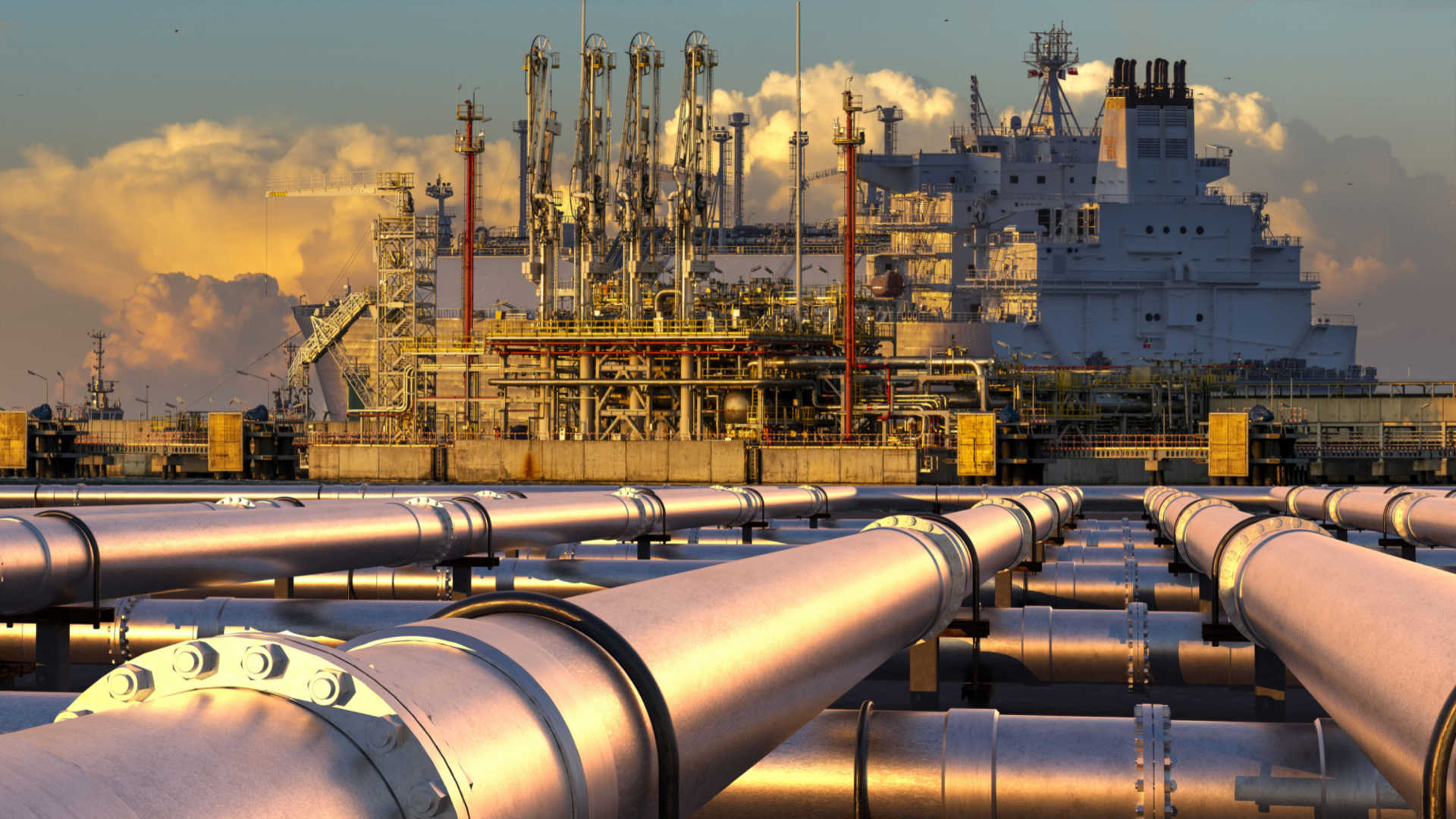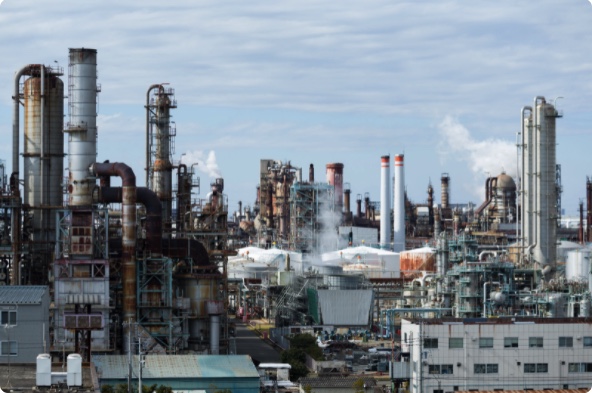
Private equity commits to LNG at the expense of long-term energy transition
Part 2 of a research series on private equity and LNG. To find Part 1 click here.
February 9, 2023
Private financing fuels LNG’s uncertain future
Part 2: Private equity commits to the LNG industry at the expense of long-term energy transition
Private Equity Fuels Proposed Gulf Coast LNG Terminals
The U.S. Liquefied Natural Gas (LNG) export industry has been rapidly growing due to record-high natural gas prices, incentivizing private equity and other investors at the expense of working families and the climate. The construction of new LNG export terminals is incongruent with the diminishing long term demand outlook for LNG internationally. In the short term, the U.S. LNG industry has the ability to assist Europe without needing to construct new gas infrastructure according to Institute for Energy Economics and Financial Analysis (IEEFA).
Currently, there are 15 new LNG export terminals or expansions approved for construction by the Federal Energy Regulatory Commission (FERC), projecting to increase U.S. LNG export capacity by 28 billion cubic feet per day (bcfd) by 2025, more than double 2022’s first half export capacity of 11.1 bcfd. This new construction would add to the current seven operating export terminals in the U.S. Of these FERC-approved new projects, 60% have some private equity financial backing. An additional 14 LNG export terminals have been announced (and not yet FERC-approved) – 42% with private equity backing (see Table 1 and 2).
________
Table 1. FERC-approved LNG export terminals
| LNG Terminal | Operator | PE firm | Location | Capacity (Bcfd) |
| Alaska Gasline | Alaska Gasline Development Corporation | NA | Nikiski, AK | 2.63 |
| Cameron Train 4 Expansion | Cameron LNG, LLC | KKR | Hackberry, LA | 1.41 |
| Commonwealth | Commonwealth Projects | NA | Cameron Parish, LA | 1.21 |
| Corpus Christi Stage 3 Expansion | Corpus Christi Liquefaction Stage III, LLC | NA | Corpus Christi, TX | 1.86 |
| Driftwood | Tellurian, Inc. | NA | Calcasieu Parish, LA | 4.00 |
| Eagle | Eagle LNG | Energy and Minerals Group | Jacksonville, FL | 0.13 |
| Freeport Train 4 Expansion | Freeport LNG | IFM Investors | Freeport, TX | 0.72 |
| Golden Pass | Qatar Petroleum, ExxonMobil | NA | Sabine Pass, TX | 2.26 |
| Gulf LNG Liquefaction | Kinder Morgan et al. | Blackstone; Warburg Pincus | Pascagoula, MS | 1.50 |
| Lake Charles | Energy Transfer, LP | NA | Lake Charles, LA | 2.20 |
| Magnolia | Glenfarne Group | Glenfarne Group | Lake Charles, LA | 1.19 |
| Plaquemines | Venture Global LNG, Inc | I Squared Capital | Plaquemines Parish, LA | 3.40 |
| Port Arthur | Sempra Infrastructure Partners | KKR | Port Arthur, TX | 1.86 |
| Rio Grande | Rio Grande LNG, LLC | York Capital, Avenue Capital Group, Bardin Hill Investment Partners | Brownsville, TX | 3.60 |
| Texas LNG | Glenfarne Group | Glenfarne Group | Brownsville, TX | 0.55 |
________
Private equity firms, KKR and I Squared Capital are two examples of the PE industry involvement in the emerging LNG export economy. And, as we know from private equity’s track record in other industries and sectors, firms are often motivated to generate profits with little regard for long-term impacts of their investments.
KKR backs proposed LNG terminal opposed by community
KKR is one of the private equity firms investing in LNG infrastructure build-out. Over the past two years, the firm has been acquiring oil and gas assets from public markets in transactions totaling about $15.8 billion, according to recent PESP research. One of those transactions included a 2021 deal in which KKR acquired 20% of Sempra Infrastructure Partners for $3.37 billion. While KKR says that it is committed to sustainable investing, Sempra’s Port Arthur LNG project is facing opposition from community groups, including Port Arthur Community Action Network, who argue this plant will only make Port Arthur’s unhealthy and harmful air quality that much worse for the predominantly Black and Latino coastal town. Unfortunately, Port Arthur is not KKR’s first foray into harming frontline communities. KKR’s current energy portfolio of dirty and harmful energy assets earned it a ‘D’ in the Private Equity Climate Risks Scorecard.
I Squared Capital touts investment opportunities in LNG
I Squared Capital is a Miami-based private equity firm that focuses on infrastructure investments with over $34 billion in assets under management, 40% of which are in the energy sector. I Squared Capital committed $460 million in 2019 to support Venture Global’s projects to build over 60 million tons per year of LNG in Cameron Parish and Plaquemines Parish, Louisiana. Last year Gautum Bhandari, I Squared managing partner, told Financial Times “the reconfiguration of liquified natural gas supplies from the US and Canada to Europe and Asia is a big investment theme [and] there is a significant need for new investment.”
Even More LNG Projects on the Horizon
In addition to FERC-approved LNG export terminals, 14 additional LNG projects have been announced, 42% of which have some private equity backing (see Table 2). These terminals are in varying stages of seeking construction permits, buyers for their LNG, and capital funding for construction.
________
Table 2. Proposed LNG Terminals as of December 2022
| LNG Terminal | Operator | PE firm | Location | Capacity (Bcfd) |
| Corpus Christi LNG Midscale 8-9 | Cheniere Energy | NA | Gregory, TX | 0.45 |
| CP2 LNG | Venture Global LNG | I Squared Capital | Cameron Parish, LA | 1.98 |
| DelfinLNG | Fairwood Peninsula Energy Corp | NA | Cameron Parish, LA | 1.80 |
| Delta LNG | Venture Global LNG | I Squared Capital | Plaquemines Parish, LA | 2.76 |
| Wyalusing/ Gibbstown LNG | Delaware River Partners/ Fortress Transportation and Infrastructure Investors | Fortress Investment | Wyalusing, PA/ Gibbstown, NJ | 0.35 |
| JAX LNG (Phase II) | Northstar Midstream/Pivotal LNG | Oaktree Capital | Dames Point, FL | NA |
| Louisiana Floating LNG | New Fortress Energy | Fortress Investment | Grand Isle, LA | 0.40 |
| NFE Miami LNG | New Fortress Energy | Fortress Investment | Miami, FL | NA |
| Nopetro LNG | CH4 Venture | NA | Port St. Joe, FL | 0.01 |
| Penn LNG | Penn America Energy LLC | NA | Chester, PA | 0.92 |
| Pointe LNG | Pointe LNG LLC/Louisiana LNG Energy | NA | Plaquemines Parish, LA | 0.79 |
| Fourchon LNG | Energy World International Ltd | NA | LaFarouche Parish, LA | 0.66 |
| Qilak LNG | Lloyds Energy Company | NA | Prudhoe Bay, AK | 0.53 |
| West Delta LNG | LNG 21, LLC/West Delta LNG, LLC | NA | Plaquemines Parish, LA | 0.80 |
________
Fortress Investment’s terminal projects hit opposition
Three of the proposed LNG export terminals are backed by private equity firm Fortress Investment, more than any other investor. In addition to onshore export terminals, Fortress Investment’s subsidiary, New Fortress Energy (NFE) is attempting to build offshore floating liquefaction terminals.
NFE had built an LNG facility in Puerto Rico without the necessary FERC approval, according to a June 2022 D.C. Circuit Court of Appeals ruling. According to Earthjustice, NFE must now comply with a FERC order requiring it to submit an application to fully evaluate and obtain a permit for the terminal. This process would enable the Puerto Rican public an opportunity to challenge the facility for a lack of safety and environmental protections at the terminal site. This is not the first victory environmental groups have secured against New Fortress Energy’s LNG terminals. Through a settlement with PennFuture and the Sierra Club, an affiliate of NFE put the proposed Wyalusing LNG plant in Pennsylvania on hold in July 2022.
Private Equity’s LNG Stranded Asset Risks Grow
Russia’s war in Ukraine has disrupted European gas markets, sparking interest in exporting U.S. gas. Russia’s halting of natural gas supplies to Europe, combined with the EU’s restrictions on Russian oil and gas, have contributed to steep price spikes. To fill the gap left by Russian gas, the Biden Administration authorized the U.S. to establish a supply chain of LNG “of at least 15 billion cubic meters (bcm) in 2022 with expected increases going forward” last spring. Within six months of President Biden’s announcement, the gas industry exceeded the export target with existing LNG export terminals. This reporting aligns with the IEEFA findings that the U.S. LNG industry has the ability to assist Europe without the need to construct new gas infrastructure.
That being said, the stranded asset risk of LNG infrastructure looms as the EU weighs its long-term carbon reduction goals with short-term energy needs and gas price fluctuations. The EU is planning to reduce its emissions by 55% by 2030 (compared to 1990 levels), and certain countries are halting expansion of LNG import infrastructure due to high prices. “Most European utilities don’t want to touch gas-related projects with a barge pole as companies seek to improve their ESG metrics, improve valuation and avoid stranded asset risks,” said Elchin Mammadov, an analyst at Bloomberg Intelligence. Moreover, according to a December 2022 analysis by IEEFA, LNG prices in Asia were up 300% compared to the year before—leading to crumbling gas demand in Asia.
Yet, amid this uncertainty, private equity remains an attractive source of funding for LNG projects. For instance, the executive chairman and co-founder of Driftwood LNG’s sponsor Tellurian, Charif Souki announced the company is now looking for equity partners to finance the $13 billion LNG project. “The money is most likely to come from a potential strategic partner because this is where the money is today,” Souki said. The million, or in this case billion, dollar question is whether the private equity industry can generate returns by investing in LNG given the volatile market and continued projections of demand destruction amid growing commitments towards renewable energy infrastructure.
LNG investment over the next few years undermines national interests in affordable energy, climate justice, and global cooperation to achieve the Paris Climate Agreement’s 1.5-degree Celsius warming scenario. Experts suggest that the current LNG supply is enough to meet energy demand. But private equity’s continued interest in LNG exposes institutional investors to climate-related financial risks and environmental harms.
